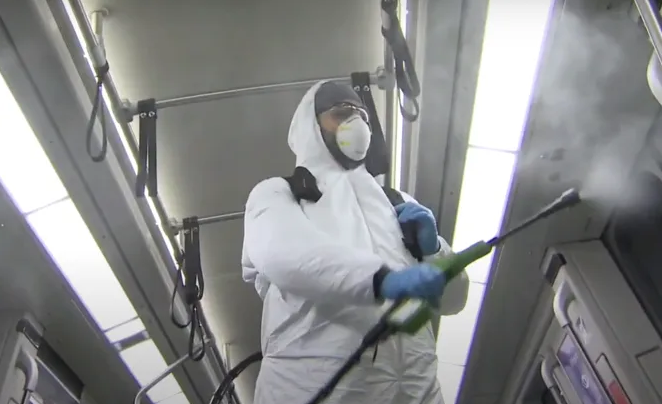A Bay Area transit advocate said he's taken transit eighty times since the start of the COVID-19 pandemic and felt perfectly safe doing it. Trains were spotlessly clean and mask usage was universal. Attendants were on hand all day long continually cleaning high-touch areas.
That transit advocate, however, wasn't living in the Bay Area at the time--he was living in Taipei.
He was one of seventy people who participated in a 'Bay Area Transit Rider Voices Forum' sponsored by Friends of Caltrain, Seamless Bay Area, the San Francisco Transit Riders, and other advocacy groups. The purpose of the online forum, which was held this afternoon, was to hear from Bay Area riders about what deters them from using the region's trains, buses, and ferries during the COVID-19 pandemic.
Before the forum began, Seamless Bay Area's Ian Griffiths reviewed the dire situation for transit agencies, which have seen precipitous drops in ridership and fare-box revenue. But, he said, "twenty to thirty percent of [regular] riders are still using transit every day... those are our essential workers."
To serve their needs, and to help grow ridership once the pandemic is under control, the Bay Area's 27 or so disparate transit agencies have formed a "Blue Ribbon Recovery Task Force" to figure out how to make people feel safe riding buses and trains again. "Over the next twelve months, they are focusing on a recovery strategy and identifying reforms we can make to put transit on a stronger foot in the coming year," said Griffith. He said he was hopeful this kind of cooperation would continue even if COVID-19 is vanquished by a vaccine or effective treatment.
In the meantime, the task force, following best practices of transit agencies overseas, has identified ten practices to improve safety, as listed below in a slide from Griffiths' introductory presentation:
Early on the epidemic, a badly researched, baseless study from an economics professor at MIT tried to link COVID clusters in New York to the subway. It helped frighten people away from transit in the U.S. However, further research showed its conclusions were simply wrong; they did not conform to real-world, epidemiological data. In fact, studies from the world's densest, most transit-rich cities show that transit does not have to be dangerous--if riders wear masks and the agencies follow the recommendations listed above.
That said, "I can’t really say anything is 100 percent safe. And we also know the spread of this virus is related to how many infections there are overall in our region and our country," said Griffiths, adding that with increasing cases in the U.S. and California, he's not recommending anyone start taking unnecessary trips by any mode. "But when we look at places where they have flattened the curve, we can see that transit can be safe. Where the right precautions are taken, transit can be safe."
That was the background. And making transit safe will depend on more research from overseas and the advice of virologists and epidemiologists. However, the main point of the meeting was to hear from riders, transit operators, and advocates about what it will take to make them feel safe--and, short of a vaccine, confident enough to go back to riding transit regularly.
"I was on a bus and a bunch of teenage kids got on the bus, and half didn’t have a mask on," said Tom Barton, a San Francisco rider who's been taking Muni since 1967, who participated in one of the meeting's breakout groups to gather feedback. "One person felt apprehensive riding BART because a person on the train was not wearing a face covering," added Ron Kilcoyne, an advocate and former manager of Santa Clarita Transit, who also participated in the breakout groups of the meeting.
Aida Banihashemi-Jahromi, a manager at the Marin County Transit District, said she'd heard complaints from riders of people boarding the bus masked, but then removing their masks once they'd sat down.
Others in the breakout groups were concerned about ventilation and there was some disagreement about how successfully agencies such as BART and Muni have improved cleaning of buses and trains. But a consistent theme--as Streetsblog pointed out in a previous post--was definitely that mask usage still isn't universal, which made riders uneasy. Cat Carter of the San Francisco Transit Riders wondered if transit agencies would start handing out masks.
"We haven’t gotten to the point of handing out masks," said Chantal Reynolds of AC Transit. But she said when the agency finishes putting in protective shields for its drivers in August, it may start handing out masks as well.
But until mask usage is as universal as it is in a places such as Taipei, concluded the group, it's going to be tough to make people feel completely safe riding transit.
What will it take to make you feel safe riding transit again? Post your thoughts below.






